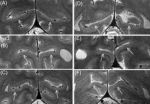(Press-News.org) BUFFALO, N.Y. -- New nanomaterials research from the University at Buffalo could lead to new solutions for an age-old public health problem: how to separate bacteria from drinking water.
To the naked eye, both water molecules and germs are invisible -- objects so tiny they are measured by the nanometer, a unit of length about 100,000 times thinner than the width of a human hair.
But at the microscopic level, the two actually differ greatly in size. A single water molecule is less than a nanometer wide, while some of the most diminutive bacteria are a couple hundred.
Working with a special kind of polymer called a block copolymer, a UB research team has synthesized a new kind of nanomembrane containing pores about 55 nanometers in diameter -- large enough for water to slip through easily, but too small for bacteria.
The pore size is the largest anyone has achieved to date using block copolymers, which possess special properties that ensure pores will be evenly spaced, said Javid Rzayev, the UB chemist who led the study. The findings were published online on Jan. 31 in Nano Letters and will appear in the journal's print edition later this year, with UB chemistry graduate student Justin Bolton as lead author.
"These materials present new opportunities for use as filtration membranes," said Rzayev, an assistant professor of chemistry. "Commercial membranes have limitations as far as pore density or uniformity of the pore size. The membranes prepared from block copolymers have a very dense distribution of pores, and the pores are uniform."
"There's a lot of research in this area, but what our research team was able to accomplish is to expand the range of available pores to 50 nanometers in diameter, which was previously unattainable by block-copolymer-based methods," Rzayev continued. "Making pores bigger increases the flow of water, which will translate into cost and time savings. At the same time, 50 to 100 nm diameter pores are small enough not to allow any bacteria through. So, that is a sweet spot for this kind of application."
The new nanomembrane owes its special qualities to the polymers that scientists used to create it. Block copolymers are made up of two polymers that repel one another but are "stitched" together at one end to form the single copolymer.
When many block copolymers are mixed together, their mutual repulsion leads them to assemble in a regular, alternating pattern. The result of that process, called self-assembly, is a solid nanomembrane comprising two different kinds of polymers.
To create evenly spaced pores in the material, Rzayev and colleagues simply removed one of the polymers. The pores' relatively large size was due to the unique architecture of the original block copolymers, which were made from bottle-brush molecules that resemble round hair brushes, with molecular "bristles" protruding all the way around a molecular backbone.
The research on nanomembranes is part of a larger suite of studies Rzayev is conducting on bottle-brush molecules using a National Science Foundation CAREER award, the foundation's most prestigious award for junior investigators. His other work includes the fabrication of organic nanotubes for drug delivery, and the assembly of layered, bottle-brush polymers that reflect visible light like the wings of a butterfly do.
INFORMATION:
The University at Buffalo is a premier research-intensive public university, a flagship institution in the State University of New York system and its largest and most comprehensive campus. UB's more than 28,000 students pursue their academic interests through more than 300 undergraduate, graduate and professional degree programs. Founded in 1846, the University at Buffalo is a member of the Association of American Universities.
END
This release is available in German.
The Stripe of Gennari develops even in those who are blind from birth and does not degenerate, despite a lack of visual input. This was discovered by Robert Trampel and colleagues from the Max Planck Institute for Human Cognitive and Brain Sciences using magnetic resonance imaging. This bundle of nerve fibers, which is approximately 0.3 mm thick, is not exclusively responsible for optic information. In the blind, it might play a greater role in processing tactile stimuli. This could contribute to an enhanced sense of touch and support ...
A $28 million University of Colorado Boulder instrument developed to study changes in the sun's brightness and its impact on Earth's climate is one of two primary payloads on NASA's Glory mission set to launch from Vandenberg Air Force Base in California on Feb. 23.
Designed and built by a team from CU-Boulder's Laboratory for Atmospheric and Space Physics, the instrument called the Total Irradiance Monitor, or TIM, will point directly toward the sun to measure both short- and long-term fluctuations in the sun's energy output as it reaches the top of Earth's atmosphere. ...
ANN ARBOR, Mich. – A study led by the University of Michigan Cardiovascular Center shows being a woman may not increase your risk of dying from treatment for a severe heart attack.
U-M researchers and colleagues in the Michigan Cardiovascular Consortium found women who received treatment such as an angioplasty had higher unadjusted in-hospital heart attack deaths.
But these differences appear to be related to women's ages and additional health problems – not gender, says study lead author Elizabeth Jackson, M.D., M.P.H., an assistant professor of internal medicine ...
February 22, 2011 — (BRONX, NY) — In an advance that could improve battlefield and trauma care, scientists at Albert Einstein College of Medicine of Yeshiva University have used tiny particles called nanoparticles to improve survival after life-threatening blood loss. Nanoparticles containing nitric oxide (NO) were infused into the bloodstream of hamsters, where they helped maintain blood circulation and protect vital organs. The research was reported in the February 21 online edition of the journal Resuscitation.
"The new nanomedicine was developed to address the need ...
An electronic health record system should be the backbone of health care reform in Canada and more must be done to speed up the implementation of this initiative across the country. Furthermore for this system to be put in place effectively, doctors and front line health care workers and administrators must be encouraged to play a more active role. These are the findings of an innovative new study assessing the effectiveness Canada Health Infoway's e-health plan. The study, which was conducted by scientists at the Research Institute of the McGill University Health Centre ...
Women scientists must confront sexism when competing for awards that recognize their research, according to a new analysis.
Research funded by the National Science Foundation and sponsored by the Association for Women in Science found that female scientists win service or teaching awards in proportion to the number of women in the PhD pool for their discipline, says sociologist Anne Lincoln at Southern Methodist University in Dallas. That's not the case, however, for awards for their research, says Lincoln, one of three authors on the research, which was reported in Nature.
The ...
CAMBRIDGE, Mass.- MIT engineers have designed a new type of nanoparticle that could safely and effectively deliver vaccines for diseases such as HIV and malaria.
The new particles, described in the Feb. 20 issue of Nature Materials, consist of concentric fatty spheres that can carry synthetic versions of proteins normally produced by viruses. These synthetic particles elicit a strong immune response — comparable to that produced by live virus vaccines — but should be much safer, says Darrell Irvine, author of the paper and an associate professor of materials science ...
WASHINGTON -- Infants and toddlers can suffer serious mental health disorders, yet they are unlikely to receive treatment that could prevent lasting developmental problems, according to research published by the American Psychological Association.
One barrier to mental health care for young children is "the pervasive, but mistaken, impression that young children do not develop mental health problems and are immune to the effects of early adversity and trauma because they are inherently resilient and 'grow out of' behavioral problems and emotional difficulties," according ...
It may seem paradoxical, but being part of a crowd is what makes you unique, according to UCLA life scientists.
Biologists Kimberly Pollard and Daniel Blumstein examined the evolution of individuality —personal uniqueness — by recording alarm-call vocalizations in eight species of rodents that live in social groups of various sizes. They found that the size of the groups strongly predicted the individual uniqueness in the animals' voices: The bigger the group, the more unique each animal's voice typically was and the easier it was to tell individuals apart.
Their ...
CORVALLIS, Ore. – The terribly destructive earthquake that just hit Christchurch, New Zealand, was only a moderate 6.3 magnitude, but had certain characteristics that offer an important lesson to cities up and down the West Coast of North America that face similar risks, experts say.
The New Zealand earthquake killed dozens – and some fear the death toll may rise to the hundreds – and was an aftershock of the much more powerful 7.1 magnitude earthquake that struck that nation last September near the same area, but caused no deaths.
Even though this earthquake was weaker ...

